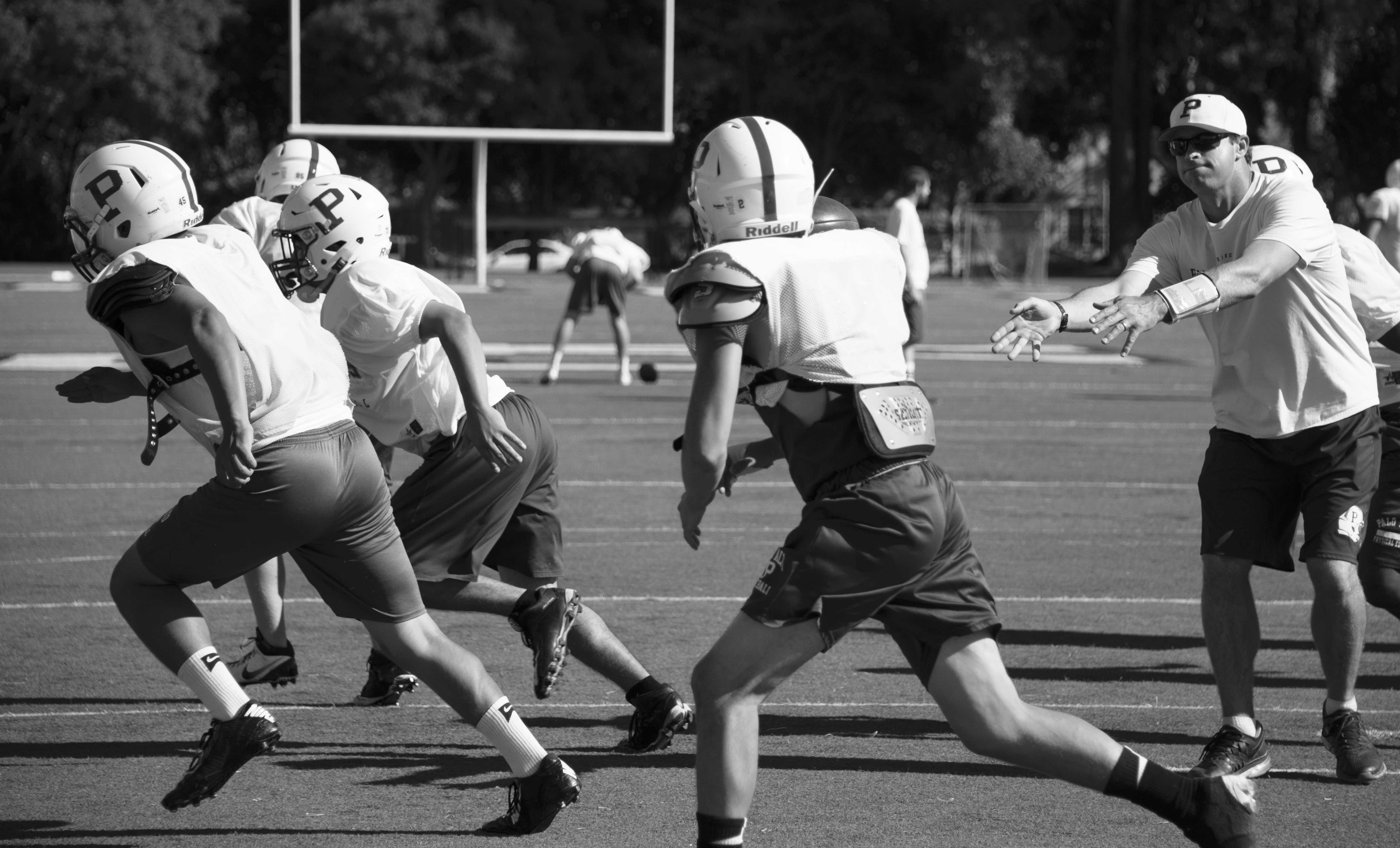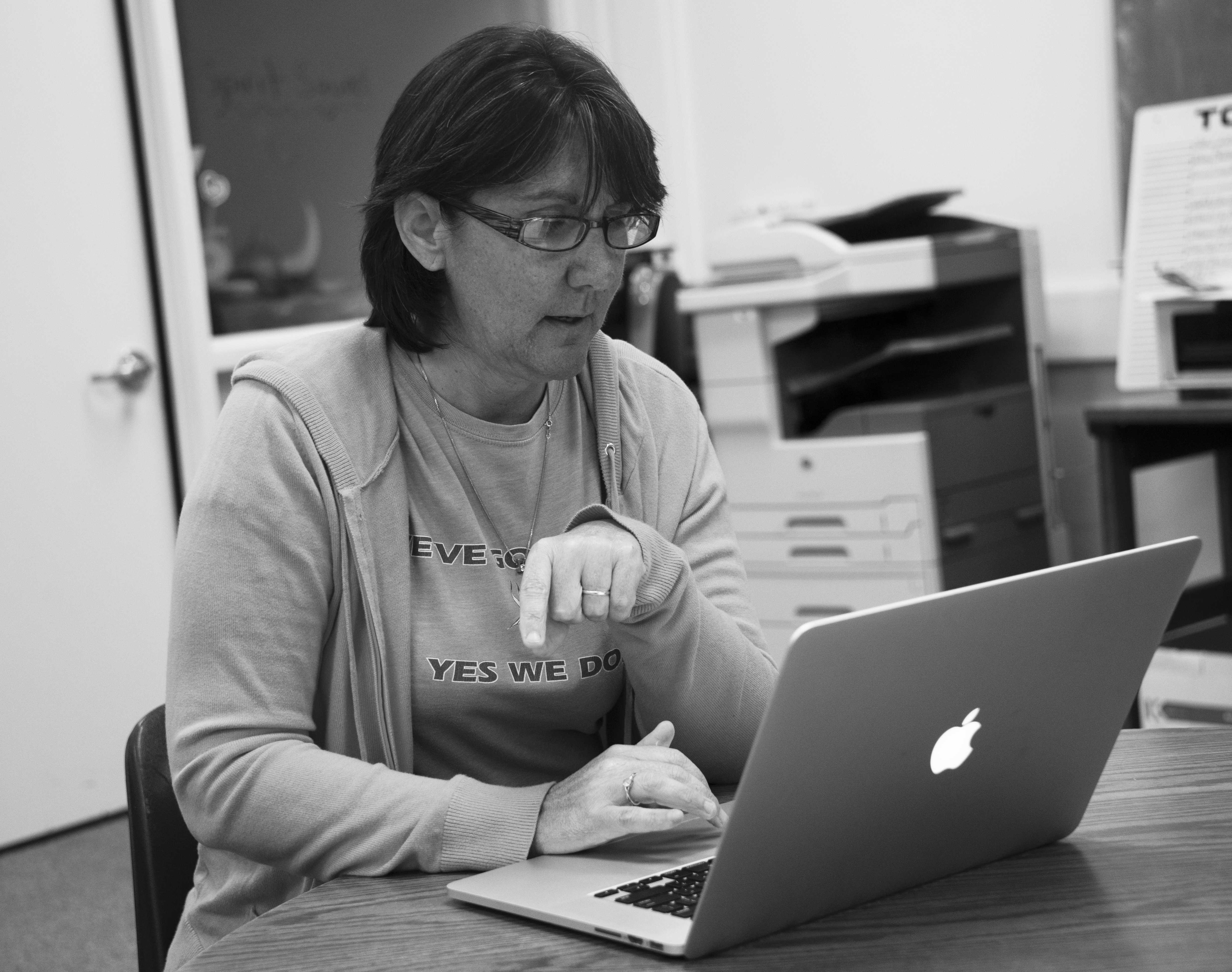This season, junior Jared Stanley has not been able to play a single home game. As a water polo player without practice facilities at Palo Alto High School, Stanley and many other athletes have had to practice late at night, often at facilities far away from Paly, as they await the new gym and pool. For Stanley, who has to be taken to his late-night practices at Gunn High School by a shuttle bus, “having to trek all over is a hassle.”
The construction of the new gym is occurring at the same time as the Paly sports department undergoes a major transition. The new athletic director, Kathi Bowers, who is also a long-time Paly math teacher, has to juggle organizing transportation, practice times and practice locations for Paly’s athletes, who no longer have a home gym or pool to practice in.
As the Palo Alto Unified School District attempts to reform academic policies to reduce student stress, the lack of a gym and the subsequent changes made to the athlete’s practice schedules is functioning as an additional stressor for Paly athletes.
I can’t really bike to the golf course, so i have to rely on other people. Junior Emily Hwang
New Challenges
According to Bowers, seven out of nine fall sports have had to rely on shuttles to transport athletes to and from school to their practice locations due to the lack of practice facilities at Paly. Only football and cross country are able to continue practicing on campus.
Often, the shuttles run into traffic when traveling from location to location, which severely reduces practice and homework time for students. Central Coast Section, the league that governs Paly sports, mandates that state sports practices cannot exceed 18 hours per week, and that these hours include transport time in the time allotted to practice. These rules have led to a practice time reduction for Paly sports.
“Their practice time is actually limited because they go on the bus and they come home on the bus,” Bowers says. “They can’t practice for more than two hours, because that’s time allocated for the bus ride.”
The bus rides, although officially part of the allotted time, can be made far longer when subject to heavy traffic, and thus can greatly increase the time that students are spending at practices each day.
“Even though our practice time is two hours, it can be four hours, so we’re trying various ways to alleviate that,” Bowers says. “We have coaches trying to hold a Saturday practice instead of a weekday practice, and give them [athletes] a day off.”
Some players cannot even make it to practice off of campus. Emily Hwang, a junior golf player is just one athlete who struggles.
“Sometimes it’s hard for me to get a ride to the golf course for practice when my parents are working,” Hwang says. “I can’t really bike to the golf course, so I have to rely on other people.”
Relying on other people, however, is not possible for many student athletes, given that the rules in the California Educational Code don’t allow students to drive other students to practices or games.
In addition to having practice times cut short, Paly must share practice facilities with other schools, like Gunn, leading to further complications. For student athletes, this may mean odd practice hours. According to Bowers, players can spend even more time away from school, unable to work on homework, especially when games are off campus.
In the case of varsity water polo, which is currently practicing at Gunn High School, the Gunn athletics programs have priority to the sports facilities, which pushes Paly’s practice times to later hours. Senior Katie Francis, a fourth-year varsity water polo player, has experienced the consequences of these odd hours firsthand.
“The new practice schedule for me is 8 p.m. to 10 p.m. at Gunn, which is not nearly as convenient as it has been in the past,” Francis says. “This late practice usually means [that] I am up [later] and I have to get my homework done [earlier].”
How Coaches Are Helping
Though it has been difficult for many athletes to adjust to this new arrangement, many feel that their coaches have been understanding and flexible. Varsity boys water polo coach Aaron Johnson says that the construction has made it necessary for him to be more lenient to his athletes.
“I just have to make it work with what we have,” Johnson says. “We’re grateful for the time that they give us at all the pools we’re in, so it’s something that I have to be flexible on.”
Bowers and the administration have tied in some freedom for the athletes in terms of how they can get to and from practice, so that they don’t lose too much time on the bus.
“All the students can drive themselves to practice,” Bowers says. “And that’s one example where our department is trying to be flexible.”
Food For Thought
Due to the complications that come with construction, Bowers suggests that teachers and coaches alike try to be more understanding to the athletes’ situations.
“I do know that when you’re on campus, it’s easier to let that [the sport] be the place where you get flexibility,” Bowers says. “We’re in the opposite position where the teachers need to be a little more flexible with the athletes.”
Bowers also encourages students to be more understanding with teachers who aren’t as flexible, explaining that it’s their job to maintain order and to ensure consistency in the enforcement of the rules.
“The teachers make these rules in the main interest of the kids — they’re not being inflexible because they don’t care,” Bowers says. “They do it because they believe that it’s the right thing.”
Bowers adds that students can learn to work with their situation, even if teachers and coaches seem inflexible.
“The world is what the world is,” Bowers says. “The most important thing you can learn as teenagers is learn how to play the world as the world exists.”






